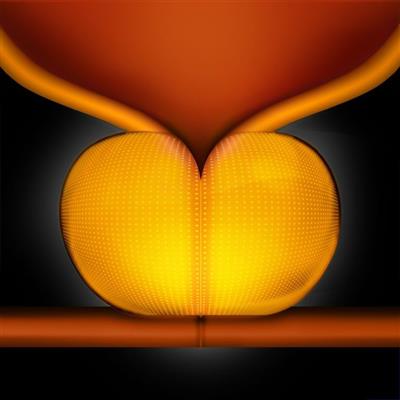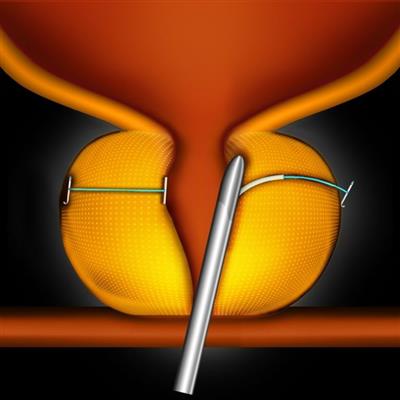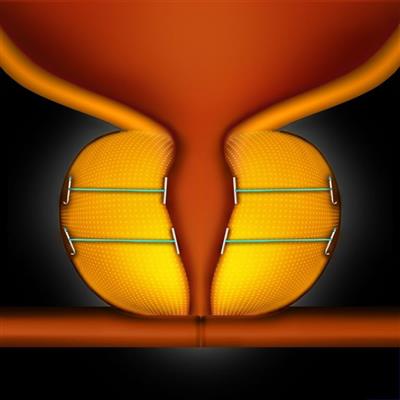What is the UroLift procedure?
The UroLift® System treatment is a minimally invasive approach to treating an enlarged prostate (BPH) that uses small titanium clips to gently lift and compress the prostate tissue out of the way so it no longer blocks the urethra urinary channel.
The procedure avoids cutting, heating or removal of prostate tissue. Thus, the risks of erectile problems (impotence), ejaculatory problems (retrograde ejaculation), or permanent urinary incontinence are therefore reduced.
UroLift
Why patients choose Urolift?
- No cutting of any tissue
- No risk of incontinence
- No risk of ejaculatory dysfunction
- Fast recovery
UroLift is a good option for many patients with an enlarged prostate gland causing obstruction to the flow of urine. Patients who do not wish to be taking daily pills, cannot tolerate medications are great candidates for the procedure. This is also a great choice for patients who wish to preserve their ejaculation as the traditional surgical methods do decrease the amount of semen that is expelled with orgasm.
What are the Benefits of the UroLift procedure?
You might receive the following benefits. The doctors cannot guarantee you will receive any of these benefits. Only you can decide if the benefits are worth the risk.
- Relief of urinary obstruction
- Less bothersome urinary symptoms.
- Improved ability to urinate and empty the bladder.
- Decreased risk of infections
- Decrease risk of bladder stone formation
- Potential to stop all prostate / urinary related medications
- Not know to cause ejaculatory or erection problems
- Less chance for hospital stay and bleeding as compared to the traditional TURP method.
- “No burnt bridges” – If a person’s prostate continues to enlarge over time even after the UroLift system has been done, the alternative treatments are still possible to do in the future.
- No tissues is removed or damaged – this results in fast recovery
- The implants may always be removed and more aggressive therapy may be done in the future.
What are the Risks of the UroLift procedure?
Most procedures are straightforward; however as with any surgical procedure there is a chance of side effects or complications. Most of these side effects are often mild and short-lasting (4-6 weeks)
Common Side Effects:
- Mild to moderate bleeding in the urine
Occasional
- Temporary insertion of a catheter (tube passed through the urethra to empty your bladder) after the procedure
- Urine infection requiring antibiotics
- Failure to improve some are all of your urinary symptoms which may require an alternative or additional treatment with either medications or other procedures.
- Pelvic pain
- Discoloration / bruising behind the scrotum
Rare
- Heavy bleeding that requires removal of clots or further surgery
- Scarring of the urethra channel
- Formation of stones in the bladder (2%)
How is the UroLift System Performed?
The UroLift procedure is usually performed as day surgery (go home the same day). In some cases, the UroLift may be done at the office under local anesthesia or deep sedation at a surgical center or hospital.
The operation involves passing a camera up the penis and placing small, metal clips into the prostate to lift and hold the enlarged tissue out of the way and allowing urine to flow. Most men do not need a catheter (penis tube to drain the bladder) after the procedure unless their prostate is large in which case a temporary catheter may be placed overnight.



What are the alternative options to the UroLift procedure?
The Urolift is a minimally invasive safe treatment for urinary symptoms caused by an enlarged prostate gland. However, it may not be suitable for every case. The alternative options include:
- No treatments at all (aka observation) – Observation is a great option for patients with mild symptoms. If you are considering surgery, likely your symptoms are getting bad enough where you are seeking more drastic help. We are not inclined to force any patients to undergo any procedures that they are unwilling to do. Certainly, patients may elect to undergo absolutely no intervention. We do, however, want all patients to be aware of the possible risks of delaying intervention and the possible outcomes of letting the enlarged prostate problems get out of hand.
- Medications – medication are usually not as effective as surgery, can have side effects, and you will need to take them for the rest of your life.
- GreenLight Laser Prostate Vaporization – a minimally invasive surgery that uses a laser beam to vaporize the obstructing inner part of the prostate gland that is causing your urinary symptoms. This allows for a clear and open passage of urine, improves bladder emptying and other associated symptoms of an enlarged prostate (BPH). It is considered to be the current gold standard BPH treatment.
- Rezūm™ Vapor Therapy– an office procedure under a local anesthetic, where via a camera placed into the penis and prostate, steam is injected into the prostate and heats the prostate, which eventually makes the prostate shrink.
- Transurethral Prostatectomy (TURP) is the standard operation for prostate enlargement. Laser Prostatectomy has similar effectiveness to TURP in published studies. TURP has a higher risk of bleeding compared to laser prostatectomy so you may need to stay in hospital a day or two longer with a catheter.
- Transurethral Incision of Prostate (TUIP) – also sometimes called Bladder Neck Incision. May be recommended for small prostates that are a bit too narrow.Open or Robotic Suprapubic Prostatectomy – recommended in really giant prostate glands, that are too big to manage with minimally invasive surgery. This is not a common treatment and is usually only done when the prostate is extremely enlarged and involves either the open or robotic/laparoscopic methods to remove the prostate via an incision in the belly and bladder and core out the inner part of the prostate. This is not the same operation that we do for prostate cancer, but is similar in the approach.
- Long-term catheter – recommended if you are not fit for any operation and unable to urinate at all or retaining very large volumes of urine in the bladder. May be a catheter through the penis or a tube that is placed below the belly button to drain the bladder.
- Prostate Artery Embolization – done by special x-ray doctors (interventional radiologists), the procedure involves blocking the blood supply to the prostate, thus leading to the shrinking of the prostate gland and improving urinary symptoms.
Where Is the UroLift procedure done?
The procedure is performed in the office, surgical center or hospital procedure room.
Will I Be Asleep for This Surgery?
The UroLift procedure may be done under local anesthetic that is injected via small rectal probe just before the procedure. Some patients elect to have this done under deep sedation or general anesthesia but that must be done at either a surgical center or hospital procedure room with anesthesia doctor supervision.
How Long Does the Procedure Take?
The amount of time the surgery takes depends on the size of the prostate but typically 15-30 minutes is required to complete the procedure.
Will I be staying in the hospital or going home?
Most patients are able to go home the same day of the procedure.
Getting Ready for Your Operation
If you smoke, try to cut down the amount or preferably stop, as this reduces the risks of heart and lung complications during and after the procedure if it is done under deep sedation or general anesthesia.
If you do not exercise regularly, try and do so for at least half an hour per day e.g. brisk walk or swimming. This will help both with anesthesia and with overall recovery.
You are required to visit your primary care doctor for “clearance” for the procedure. Typically, this is a general checkup that includes checking your heart, lungs, blood work, EKG, chest x-ray and any other necessary tests to ensure that you are fit and ready for surgery. Your primary doctor will notify you if you need to see any other specialists such as a cardiologist or pulmonologist to make sure that you are ready for the procedure.
Tell the doctor if you:
- take medication to thin your blood (anticoagulants), such as: aspirin, clopidogrel, plavix, dalteparin, fragmin, rivaroxaban, xarelto, heparin, lovenox, warfarin, coumadin, prasugrel, effient
- take steroids such as prednisone or arthritis medications
- take any other medications, such as herbs, vitamins, minerals, or natural or home remedies.
- have taken any antibiotics in the past 3 months.
- have any sort of heart condition, implanted devices such as knee or hip replacements.
- are allergic to any medications or latex, especially local anesthetic like lidocaine, xylocaine, marcaine
- had a urinary tract infection (uti) in the last month.
- had an infection or were hospitalized after a previous prostate biopsy.
- have a history of achilles tendon injuries or tendonitis.
- have difficulty hearing.work at a hospital or nursing home.
5 to 7 Days Before Your Procedure
Stop taking:
- aspirin and medications that contain aspirin, unless directed otherwise by the doctor
- vitamin e, multivitamins
- Stop taking other stronger blood thinners (like Plavix, Xarelto or warfarin) as directed by your primary doctor or cardiologist
3 Days Before Your Procedure
- Stop taking pain medicines like: ibuprofen (Advil® or Motrin®) or naproxen (Aleve®)
Morning of Procedure
- If you are having the UroLift procedure done in the office, please make sure you have a good meal and take all your blood pressure and diabetes medications if you take those. A good meal will reduce the risk of you getting weak after the procedure. Please don’t skip your meal and stay very well hydrated.
- In those having UroLift done at the hospital or surgical center, DO NOT EAT or DRINK anything after midnight before your procedure. If you eat even a light meal or have a small drink, this may increase the risk of complications with anesthesia, thus the procedure will either be delayed or rescheduled to another day.
Day of the UroLift Procedure
Morning of the procedure, we would like for you to do an enema with any over the counter product like a Fleets enema or a saline enema to clear out the rectum.
If the procedure is done in the office, the typical course of the procedure is as follows:
- When you arrive to the office, you will check in at the front desk
- The medical assistant will bring you back to our procedure room where you will have a chance to ask any questions about the procedure and signed a consent permission for the procedure
- Then you will be given a chance to privately undress below the waist and cover up with a sheet.
- The medical assistant will then administer a shot of an antibiotics in the buttock area.
- Then you will lay on your left side on the examination table and the doctor will gently place a lubricated ultrasound probe in the rectum to do a quick injection of a local anesthetic and remove the probe. That will take about 30 seconds to do.
- At this point, you will be asked to reposition on the examination table and lay on your back with your legs in stirrups. The penis and scrotum area will be cleaned with iodine soap and sterile drapes will be placed over your thighs and lower belly.
- Will will then gently administer numbing medicines into the penis and bladder.
- Afterwards the doctor will be using a camera through the penis to place the Urolift clips.
- Towards the end, the doctor will decide whether you would need a penile catheter.
What Should I Expect After The Operation?
If done in the office, once the procedure is complete and you do not have a catheter, you will be a given a chance to urinate and may pass some blood with urination. This is expected. If you are not able to urinate, we may need to place a temporary catheter tube in the penis to allow the swelling to calm down and remove the catheter in a day or two
.If the procedure was done in the hospital or surgical center, then after your operation, you will be placed in the recovery area. You may start eating and drinking as soon as you recover from the anesthetic. The nurses will provide any pain medicines, will monitor your breathing and vital signs. You may not remember any conversations or your time in the recovery area. Once the nurses and anesthesia staff have cleared you to go home, you will be provided follow up information. You will be a given a chance to urinate, but if having difficulty, a penis catheter may be placed by the nurse and kept for a day or two to allow the swelling to calm down an let you urinate better.
If you had deep sedation or general anesthesia, you MUST arrange for a ride home.
Discharge Information and Home Advice
Catheter After Urolift
Rarely, a patient after the UroLift procedure may require a catheter to drain the bladder temporarily. A urinary catheter is a tube that runs from the bladder out through the tip of the penis and drains into a bag. It is important to drain the urine in this way until the urine is clear. Your catheter is usually removed 1-3 days after your operation. Avoid pulling on the catheter as this may provoke bleeding. It is common for urine to occasionally squirt around he catheter at the tip of the penis. It is also very common to have a bit of blood dripping around the catheter at the tip of the penis.
We advise putting a small amount of antibiotic ointment such as Neosporin or Bacitracin or simply some Vaseline at the tip of the penis several times per day to allow the catheter to glide smoothly.
Call our office or stop by if all the urine is coming around the catheter and none is draining into the urinary drainage bag. You and your family/friends will be given instructions on the catheter care.
Bleeding
It is quite normal to see an occasional show of blood in your urine during the first month after surgery – this is due to the healing of the operation site. It is common to have more bleeding if you strain to have a bowel movement. If you see blood, simply increase your fluid intake. If you have prolonged heavy bleeding (>24 hours), significant pain or increasing difficulty passing urine, please contact the our office.
Pain
Because there are no external cuts, this procedure is relatively pain free. You may experience some discomfort from the catheter, but this is usually easily treated with mild painkillers. Tylenol may be used for pain. However, we will provide you with a prescription for a stronger pain killer should you need one. Beware, stronger pain killers may cause constipation.
Diet
It is important that you do not get constipated. There are no dietary restrictions but you should try and eat plenty high fiber food or anything that would get your bowels moving. You may use milk of magnesia or an enema if you get severely constipated. If you have chronic constipation, you may be provided with a stool softener as one of the prescriptions after the procedure to prevent constipation. The reason to avoid constipation is that straining to have a bowel movement tends to increase the risk of bleeding from the prostate.
Showers
There are no restrictions on taking showers even with the catheter in the penis. Staying and keeping yourself clean is always important. Please do NOT take baths, go into the pool or ocean with the catheter in place.
Exercise
You should take it easy for a month, although it is important to do some gentle exercise like walking, to reduce the risk of developing a blood clot in your legs. Try to avoid any activity that makes you strain as this will increase your chances of bleeding from the prostate. You can resume normal sexual activity 2 weeks after your operation.
Work
Recovery may take several weeks. However, most patients feel well within a few days to a few weeks. We will be able to advise you when it will be safe to return to work as this depends on your occupation. Most patients with a sedentary office job require about a week of recovery, but those who do a lot of straining and lifting, may need several weeks before they are clear to go back to work. We can provide you with an excuse from work an any other paperwork for your job at our offices.
Driving
You may resume driving a motor vehicle you feel well and do not have significant pain or discomfort. You are absolutely not allowed to drive or operate any other motorized device while on narcotic pain killers.
For Further Information
- Brochures: Patient Information, What to Expect After your Urolift Procedure
- Visit the official UroLift Website at: www.urolift.com

